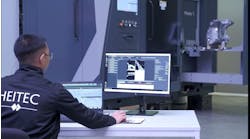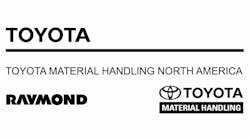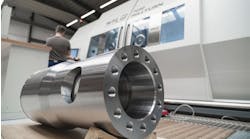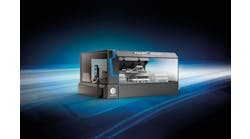Q: We’ve found some microcracking in billets forged on a steam hammer. The upset ratio is 2.5 to 1, and our forging temperature is 1,800°-2,200ºF. This is a large section, with the areas with the larger upset ratio showing micro-cracking between inclusions, mainly around the centerline of the original billet. Micro-samples show the cracks run from inclusion to inclusion.
According to our supplier, the billet was rolled from strand-cast steel. The starting billet has 5.4:1 reduction and billet hardness is below 250 BHN. The material is tested and certified to AMS 2301 cleanliness. Is it likely that cleanliness is the cause of the cracking? What is the best method to determine the cause of this microcracking?
A: The centerlines in most cast rounds will have some shrinkage porosity around the centerlines. Strand-cast billets may have more inclusions in the centers, and if such ingots are upset-forged without first drawing them out to heal the center, this porosity may result in cracks that open on upsetting. Interestingly, rectangular cast billets will not show as much porosity because the shrinkage stresses simply pull in the sides of the ingot or strands in a “bow tie” fashion. I do not know how much cleaner they are, if at all.
Much depends on the on the starting size of the billet: Larger billets tend to keep the slag inclusions, etc, that float up into the mold areas, leaving cleaner centers; Smaller billets can develop more inclusions in the centers as the bars solidify, not allowing the slag inclusions to float up. Steel suppliers can help you to select the ingot/billet size that would have the cleanest center.
Another point is that the 6418 contains more alloy than 4340, for example, and is more prone to thermal cracking as a result of heating of larger billets — especially cast billets. The practices of preheating fairly large ingots would help prevent any thermal cracking. Preheating to 1,200°-1,500ºF is recommended.
According to your answers to my follow-up questions, you seem to have a handle on the problem of internal quality. In my experience with 2301, I always checked centerlines by cutting cross sections and performing macroetching, and sometimes Magnaflux testing. We had quarter sections forged down to cylinders, machined, and magnetic-particle tested. This was the most effective way to determine center quality. If the supplier did not do this kind of centerline testing and only tested the surface and subsurface to meet the 2301 requirements, then their testing was not complete.
I have no first-hand experience with quality testing strand-cast 2301 steel, rolled or otherwise. Thus, I am unsure how clean the centers are, compared to billets from bottompoured ingots (see earlier comment).
However, in my cold forging days I learned a lot about the continuous cast centerline condition. That was when I avoided strand-cast steels to be sure that we did not develop unexpected chevron cracks during cold extrusion. For this reason, I almost always specified bottom-poured, ingot- based bar for parts that were to be cold extruded. Indirectly, I concluded that continuous cast billets have a greater tendency to show centerline problems than bottom-poured ingots.
Could the micro-cracks result from inclusions located in the centers of the billet? I definitely believe so, unless there are other reasons that I have overlooked.
For more than 40 years H. James Henning held key technical positions in the forging industry, including as director of technology for the Forging Industry Association, and as president of Henning Education Services, a Columbus, OH, firm specializing in customized education and training in forging technologies.
Guidelines and recommendations offered in this column are based on information believed to be reliable and are supplied in good faith but without guarantee. Operational conditions that exist in individual plants and facilities vary widely. Users of this information should adapt it, and always exercise independent discretion in establishing plant or facility operating practice.









